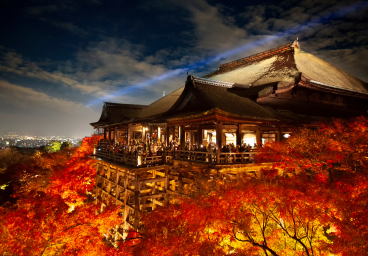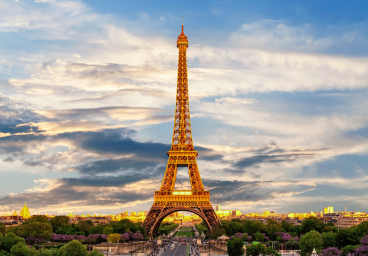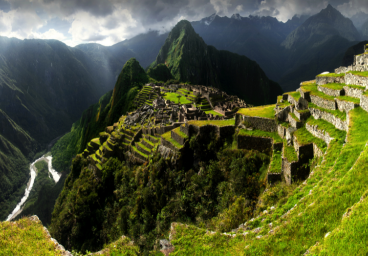Nestled in the heart of Japan, Kyoto stands as a living testament to the country’s rich cultural heritage, where ancient traditions harmoniously coexist with modern life. Renowned for its historic temples, traditional tea houses, and breathtaking gardens, Kyoto beckons visitors into a world where the past seamlessly intertwines with the present.
Historical Significance
As the former imperial capital of Japan for over a millennium, Kyoto is a city steeped in history and tradition. It served as the epicenter of Japanese culture, politics, and religion from 794 to 1868, a period known as the Heian era. The city’s storied past is reflected in its well-preserved architecture, ancient rituals, and the enduring spirit of the Japanese people.
Temples and Shrines: Spiritual Sanctuaries
Kyoto is home to a myriad of temples and shrines, each with its own unique charm and significance. Kinkaku-ji, the Golden Pavilion, is adorned with gold leaf, reflecting in the tranquil waters of its surrounding pond. Fushimi Inari Taisha, with its iconic torii gate pathway, leads visitors through a sacred forest to the mountaintop shrine dedicated to Inari, the Shinto god of rice.
Kyoto Imperial Palace: Imperial Grandeur
The Kyoto Imperial Palace, nestled in the heart of the city, served as the residence of the imperial family until the capital moved to Tokyo. Surrounded by lush gardens and imposing walls, the palace offers a glimpse into the regal history of Japan, with guided tours allowing visitors to explore its stately halls and beautiful grounds.
Gion District: Geisha Grace and Traditional Arts
The Gion district, with its narrow streets and wooden machiya houses, is synonymous with the iconic image of Japan. This is the realm of the geisha, where traditional tea houses and ochaya (geisha entertainment establishments) transport visitors to a bygone era. Gion also hosts the annual Gion Matsuri, one of Japan’s most celebrated festivals.
Japanese Gardens: Serenity in Nature
Kyoto is adorned with exquisite Japanese gardens, each a masterpiece of design and tranquility. The gardens of Katsura Imperial Villa, for example, are renowned for their meticulous landscaping and use of borrowed scenery, creating a harmonious blend of architecture and nature. The Ryoan-ji Temple features a famous rock garden, inviting contemplation and meditation.
Tea Culture: Matcha and Chanoyu
Kyoto is synonymous with Japan’s tea culture, and matcha (green tea) holds a special place in the city’s traditions. The Uji region, just south of Kyoto, produces some of the finest matcha in the country. Visitors can partake in traditional tea ceremonies, experiencing the art of chanoyu (the Way of Tea) in serene tea houses.
Arashiyama Bamboo Grove: Nature’s Cathedral
The Arashiyama Bamboo Grove offers a mesmerizing natural spectacle. Towering bamboo shoots create a cathedral-like atmosphere as sunlight filters through the dense grove. Visitors can stroll along the paths, absorbing the peaceful ambiance and exploring nearby attractions such as the Iwatayama Monkey Park.
Kyoto Cuisine: Culinary Delights
Kyoto’s culinary scene is a reflection of its cultural richness. Kaiseki, a multi-course dining experience, showcases seasonal and artfully presented dishes. Nishiki Market, known as “Kyoto’s Kitchen,” is a bustling market offering a cornucopia of fresh produce, seafood, and local specialties.
Seasonal Beauty: Cherry Blossoms and Fall Foliage
Kyoto’s beauty is ever-changing with the seasons. In spring, cherry blossoms blanket the city in hues of pink, creating a breathtaking panorama. In autumn, the vibrant colors of fall foliage transform Kyoto’s landscapes into a tapestry of reds, oranges, and golds, attracting visitors from around the world.
Preserving Tradition in a Modern World
While embracing modernity, Kyoto remains committed to preserving its cultural heritage. Efforts to maintain traditional crafts, such as Kyo-yuzen (silk dyeing) and Nishijin-ori (weaving), ensure that centuries-old techniques continue to thrive in the contemporary world.
Conclusion
Kyoto is a city that transcends time—a place where ancient traditions, spiritual sanctuaries, and the essence of Japan’s cultural identity converge. As visitors traverse its historic streets, partake in traditional rituals, and savor the beauty of its gardens, Kyoto unfolds as a living canvas that celebrates the enduring spirit of a nation. In this city where the past whispers through the corridors of temples and the fragrance of matcha lingers in the air, one discovers a timeless haven where tradition and tranquility coalesce in perfect harmony.



